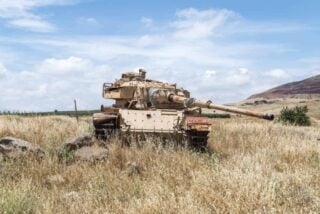
The Dept. of Veteran Affairs has released additional information for veterans with Gulf War Illness, in honor of the 20the anniversary of the Gulf War. For those vets who served but do not yet receive the Gulf War Review newsletter, below are key takeaways.
Almost 700,000 men and women participated in Operation Desert Shield and Operation Desert Storm between 1990 and 1991, during the Gulf War. Since their return, a quarter of these vets have developed illnesses believed to be related to toxic exposures sustained during the Gulf War conflict. The VA calls these diseases “Gulf War Veterans’ Illnesses.”
Vets who suffer from these illnesses are eligible for VA healthcare benefits and disability compensation. Many of the illnesses Gulf War vets face are, according to the VA, unexplainable, but research has shown that exposure to burn pits, depleted uranium, pesticides, biological and chemical warfare agents, oil well fire smoke, petroleum, anti-nerve agents, [Pyridostigmine bromide] and several different vaccinations, including anthrax and botulinum toxoid may be the cause of illness in Gulf War vets.
Gulf War vets can receive a health examination that will determine their eligibility to receive healthcare for illnesses associated with their service from the VA. It’s free of cost, very comprehensive, and following the exam, a VA healthcare professional will discuss the results with you, face-to-face. Illnesses associated with the above exposures include but are not limited to:
- Fibromyalgia
- Chronic Fatigue Syndrome
- Irritable Bowel Syndrome
Symptoms of these and other related diseases include weight loss, cardiovascular problems, ongoing fatigue, headaches, muscle and joint pain, respiratory problems, sleep disorders, gastrointestinal problems, menstrual issues in female vets, neurological issues, and more.
As a new category of Gulf War veterans – those who have served in OEF/OIF – the VA is continuing to monitor Gulf War Veterans’ Illnesses. Vets in Iraq and Afghanistan endure many of the same exposures mentioned previously, but may also develop illnesses as a result of exposure to CARC paint, chromium, and toxic embedded fragments [including depleted uranium].
In addition, OEF/OIF veterans may have been exposed to carcinogenic asbestos while they served overseas. Asbestos exposure is the only conclusive cause of the fatal cancer known as mesothelioma, which plagues countless veterans [especially WWII vets]. While mesothelioma navy cases are the highest, veterans from all branches may be at risk. Mesothelioma has a latency period of up to fifty years, so veterans may not exhibit any symptoms until their well into their seventies or eighties. By then, it’s often tedious to determine just where they were exposed to asbestos. More information about how asbestos affects those serving in Iraq and Afghanistan may be found by visiting our Asbestos Exposure in Iraq information section.
To learn more about Gulf War Veterans’ Illnesses, go to the VA website and search for “Gulf War.”




